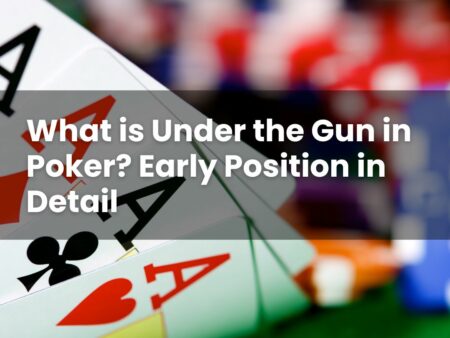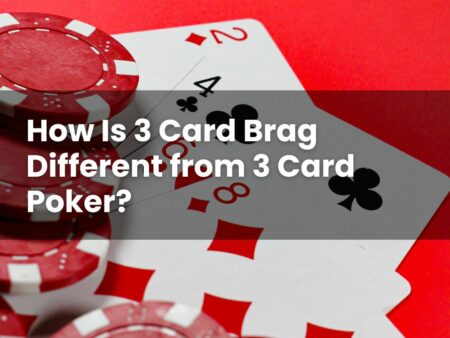Roulette is one of the most well-known games in casinos, and the reason it generates profit is due to a small, built-in advantage on every bet. This advantage quietly adds up as the wheel spins.
In this blog post, you will see what this advantage means, how it varies between European and American roulette, why the extra zero pockets matter, which bets carry more or less of this advantage, and whether players can overcome it.
Read on to learn more.
Why Roulette Always Favours the Casino
Roulette is arranged so the casino holds a steady advantage, mainly because of the zero pockets on the wheel. These pockets do not count as red or black, odd or even, or high or low. When the ball lands there, most standard bets lose.
Payouts are also set just a bit below the true chance of winning. Take an even-money bet like red or black. On a European wheel, there are 18 red numbers, 18 black numbers, and a single zero. The bet pays even money, but the chance of winning is 18 out of 37, not 18 out of 36. That slight difference is where the casino gains its margin.
Over many spins, these small differences between true chances and payouts accumulate into consistent profit for the house. So, what exactly is that margin, and how is it measured?
What Does House Edge Mean in Roulette?
The advantage mentioned earlier is the house edge, which is the average percentage of all stakes the casino expects to keep over a very long period. This is built into the maths of the game itself, rather than how any individual bets.
Consider a bet on a single number in European roulette. The wheel has 37 pockets. If your number hits, the bet typically pays 35 to 1, and otherwise loses. Over many spins, the average return on a £1 stake works out as 35 multiplied by 1 out of 37, minus 1 multiplied by 36 out of 37. This results in a loss of about 2.70%.
This same idea applies to other bets, even though payouts may differ. Changing your betting pattern does not affect this percentage. It is a property of the wheel layout and the payout table, which is why the version of roulette you play matters.
How Much is the House Edge on European Roulette?
European roulette has 37 pockets: numbers 1 to 36 plus a single zero. That single zero creates the advantage.
On average, the casino retains about 2.70% of all money wagered over time. For example, in even-money bets, there are 18 winning numbers out of 37, so the chance of winning is a little less than half. Yet the payout remains even money. This shortfall between payout and true odds results in the 2.70% margin.
If you add another zero, the numbers and advantage shift.
How Much is the House Edge on American Roulette?
American roulette has 38 pockets: numbers 1 to 36, a single zero, and a double zero. That extra pocket increases the house advantage.
Here, the casino expects to keep about 5.26% of all money wagered over time—nearly double the European version.
For even-money bets, there are still 18 winning numbers, but now out of 38 instead of 37. The payout remains the same as European roulette, so the chance of winning is slightly lower. This extra losing pocket is what raises the advantage.
That single additional zero makes a surprisingly large difference.
Why Do Extra Zero Pockets Change the Odds?
Extra zero pockets add more outcomes where most standard bets lose, but payouts do not change.
For even-money bets, European roulette offers 18 wins out of 37 spins, while American roulette offers 18 out of 38. Both pay even money, so the American wheel pays the same for a lower chance to win.
The same goes for other bets. For instance, a straight-up number bet in European roulette hits 1 time in 37 and typically pays 35 to 1, creating about a 2.70% margin. In American roulette, it hits 1 time in 38 with the same payout, increasing the margin to 5.26%.
Because the total number of pockets rises but payouts do not, the built-in advantage grows.
Knowing which wheel you’re playing on is an easy way to understand the odds you are facing if you’re considering placing a bet.
Which Roulette Bets Have the Highest and Lowest House Edge?
Most bets on the standard layout carry the same margin as the wheel itself. In European roulette, that is about 2.70% for inside and outside bets. In American roulette, it is around 5.26% in the same way.
Two notable exceptions exist:
- The top line bet in American roulette covers 0, 00, 1, 2, and 3. It typically pays 6 to 1 but covers five numbers, which is not enough to match the true chance of winning. This increases the advantage to about 7.89%.
- Some European tables use special rules like La Partage or En Prison on even-money bets when zero appears. La Partage returns half the stake immediately, while En Prison holds the bet for the next spin. These rules lower the margin on these specific bets to roughly 1.35%. Other bets remain at 2.70%.
If these rules apply, they only affect even-money bets and only when zero is spun.
Do Players Ever Beat the House Edge in Roulette?
Players can have winning sessions, sometimes even extended stretches, but that does not change the underlying built-in advantage.
The advantage is an average calculated over many spins and bets. It reflects what happens over a long period, not during a single visit to the table.
No betting system can change the payouts or the number of pockets on the wheel. While a strategy might change how you place your bets, it cannot alter the fundamental maths that sets the advantage.
For example, doubling your stakes after a loss affects how volatile your bankroll is but does not improve your expected returns per pound wagered.
Understanding this can help you set realistic expectations and maintain responsible play if you’re considering playing.
Why Casinos Rely on the House Edge for Profit
If you’ve ever wondered how casinos stay in business, the answer often lies in something subtle: the built-in advantage on each game. Roulette is no exception. This edge, which applies to every bet placed, helps ensure that the casino takes in slightly more than it pays out—enough to keep operations running smoothly over time.
Because this margin is part of the game’s design, outcomes tend to even out across thousands of spins. One player might walk away with a win, while another doesn’t, but when you look at the bigger picture, the house comes out ahead. That consistency allows a casino to keep its doors open, pay its staff, and continue offering games to play.
If you understand how this built-in edge works, it might help shape your approach if you’re considering playing—whether you’re choosing which version of the wheel to sit at, deciding which bets to place, or simply thinking about how much to bring to the table. With that in mind, the structure of roulette starts to feel more transparent, and the decisions you make might become a little more considered.
If you choose to play roulette, always do so with responsible gambling practices in mind, and never wager more than you are willing to lose.








